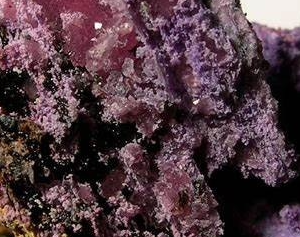Purple Chalcedony
Purple Chalcedony is a beautiful and rare variety of chalcedony, a cryptocrystalline form of silica. Chalcedony typically forms as smooth, translucent stones, and purple chalcedony is a stunning, lesser-known variation with hues ranging from soft lavender to deeper violet shades. Known for its delicate color and smooth texture, purple chalcedony is a popular choice in jewelry and for collectors.
Characteristics of Purple Chalcedony:
- Color:
- The primary feature of purple chalcedony is its light purple to lavender color, though some specimens can feature darker or richer violet tones. The color is often uniform but may show slight variations depending on the specific mineral inclusions and formation conditions.
- Composition:
- Chalcedony is a variety of quartz, composed of very fine fibers of silica that give it its smooth, fibrous structure. In the case of purple chalcedony, trace elements such as iron and manganese can be responsible for its purple hues.
- Transparency:
- Typically translucent to opaque. The degree of translucency varies depending on the stone, with some pieces being more transparent, especially in thin slices or cabochons.
- Hardness:
- Chalcedony has a hardness of 6.5 to 7 on the Mohs scale, making it durable enough for use in jewelry and other ornamental applications.
- Luster:
- Chalcedony has a waxy or vitreous luster, giving it a subtle shine when polished.
Formation:
Purple chalcedony forms in hydrothermal environments, often filling cavities in volcanic rocks or forming as part of the weathering process in regions with silicate-rich deposits. The unique color is caused by trace elements like manganese and iron that are incorporated into the chalcedony during its crystallization process.
It often forms in botryoidal (grape-like) or nodular shapes and can be found in smooth, rounded masses or as small, compact crystals.
Geographic Locations:
- Brazil: A key source for high-quality chalcedony, including the purple variety.
- Mexico: Known for producing chalcedony in a variety of colors, including purple.
- India: Some chalcedony deposits in India are known to contain beautiful purple hues.
- United States: There are chalcedony deposits in areas like California and Nevada, though purple chalcedony is rarer.
Uses:
- Jewelry:
- Purple chalcedony is commonly used in beads, cabochons, and polished stones for rings, earrings, necklaces, and bracelets.
- It is favored for its smooth texture and vibrant color, which makes it a striking addition to any piece of jewelry. It can be faceted, though it is often cut in smooth forms to highlight its natural beauty.
- Ornamental Items:
- Purple chalcedony can be cut into decorative carvings, figurines, or sphere forms, used for display or as a part of collections.
- Metaphysical Properties:
- Emotional Healing: Purple chalcedony is believed to have calming and nurturing properties. It is thought to bring emotional balance and reduce stress, promoting a sense of peace and tranquility.
- Spiritual Growth: Often associated with the third-eye chakra, it is said to aid in developing intuition and enhancing spiritual awareness. It is also believed to help with communication and clarity of thought.
- Creativity and Inspiration: It is thought to encourage creative thinking, artistic expression, and mental clarity, making it a popular stone among artists and those seeking inspiration.
Care and Maintenance:
- Cleaning:
- Purple chalcedony should be cleaned with mild soap and warm water. Use a soft cloth to wipe the surface and avoid harsh chemicals, as these can dull the stone’s appearance.
- Handling:
- While chalcedony is fairly durable, it can still be scratched by harder stones like diamonds. Handle with care to avoid damage, especially in jewelry.
- Storage:
- Store chalcedony separately from other gemstones to prevent scratching. A soft pouch or separate jewelry box compartment is ideal for keeping purple chalcedony jewelry safe.
Rarity and Value:
Purple chalcedony is rarer than the more common blue or white varieties of chalcedony, making it a more sought-after option among collectors and jewelers. While not as expensive as other precious stones, high-quality purple chalcedony with vibrant color and clarity can still be quite valuable.

Leave a Reply
Want to join the discussion?Feel free to contribute!